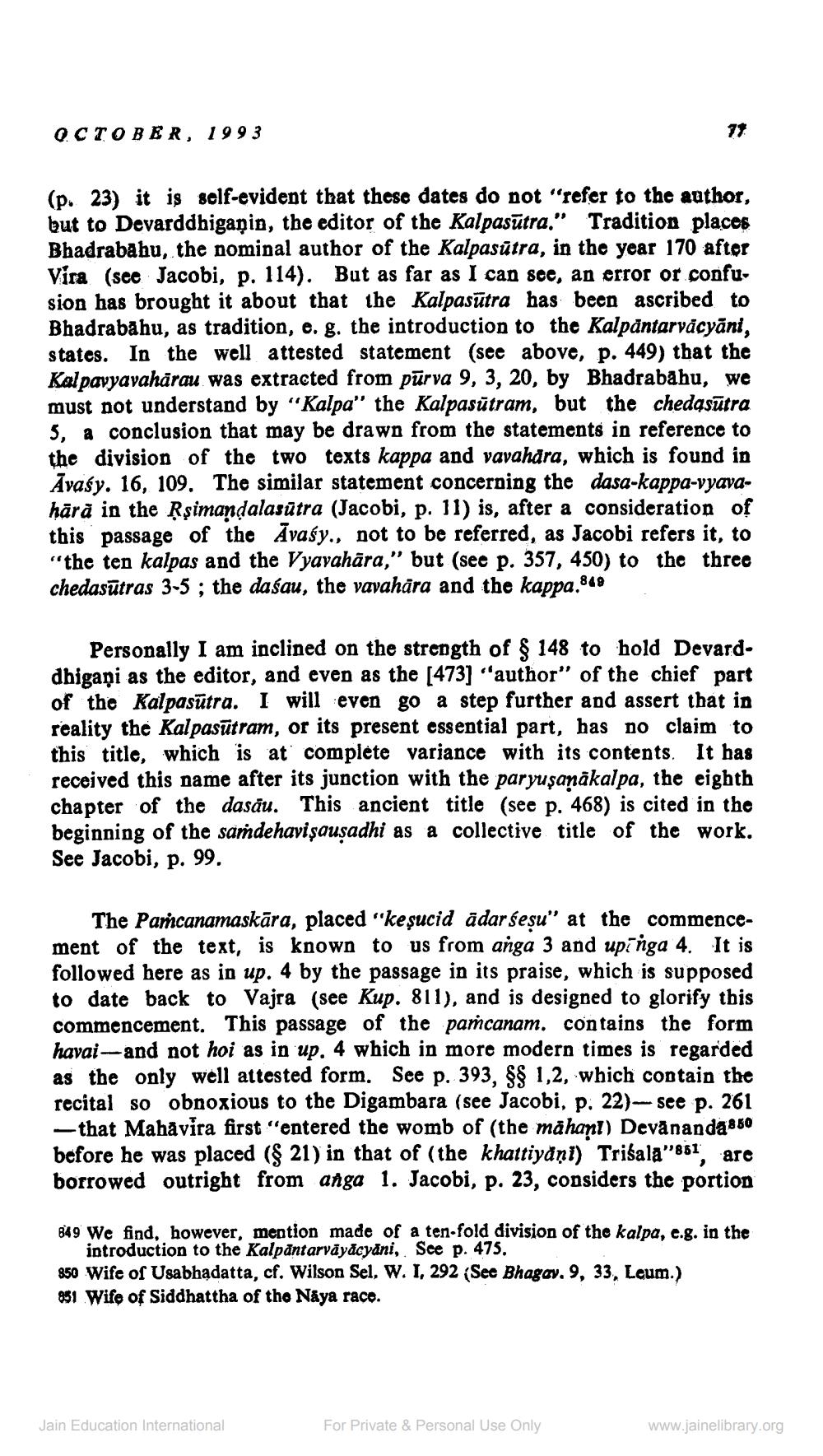________________
OCTOBER, 1993
(p. 23) it is self-evident that these dates do not "refer to the author, but to Devarddhiganin, the editor of the Kalpasūtra." Tradition places Bhadrabahu, the nominal author of the Kalpasūtra, in the year 170 after Vira (see Jacobi, p. 114). But as far as I can see, an error or confusion has brought it about that the Kalpasūtra has been ascribed to Bhadrabahu, as tradition, e. g. the introduction to the Kalpäntarvācyāni, states. In the well attested statement (see above, p. 449) that the Kalpavyavahārau was extracted from purva 9, 3, 20, by Bhadrabahu, we must not understand by "Kalpa" the Kalpasūtram, but the chedasutra 5, a conclusion that may be drawn from the statements in reference to the division of the two texts kappa and vavahara, which is found in Avasy. 16, 109. The similar statement concerning the dasa-kappa-vyavahārā in the Ṛşimaṇḍalasūtra (Jacobi, p. 11) is, after a consideration of this passage of the Avasy., not to be referred, as Jacobi refers it, to "the ten kalpas and the Vyavahara," but (see p. 357, 450) to the three chedasūtras 3-5; the daśau, the vavahāra and the kappa.849
77
Personally I am inclined on the strength of § 148 to hold Devarddhigani as the editor, and even as the [473] "author" of the chief part of the Kalpasūtra. I will even go a step further and assert that in reality the Kalpasūtram, or its present essential part, has no claim to this title, which is at complete variance with its contents. It has received this name after its junction with the paryuṣaṇākalpa, the eighth chapter of the dasău. This ancient title (see p. 468) is cited in the beginning of the samdehaviṣauşṣadhi as a collective title of the work. See Jacobi, p. 99.
The Pamcanamaskāra, placed "keṣucid ādar seṣu" at the commencement of the text, is known to us from anga 3 and upinga 4. It is followed here as in up. 4 by the passage in its praise, which is supposed to date back to Vajra (see Kup. 811), and is designed to glorify this commencement. This passage of the paṁcanam. contains the form havai-and not hoi as in up. 4 which in more modern times is regarded as the only well attested form. See p. 393, §§ 1,2, which contain the recital so obnoxious to the Digambara (see Jacobi, p. 22)- see p. 261 -that Mahavira first "entered the womb of (the māhaṇī) Devānanda 850 before he was placed (§ 21) in that of (the khattiyani) Triśala"851, are borrowed outright from anga 1. Jacobi, p. 23, considers the portion
849 We find, however, mention made of a ten-fold division of the kalpa, e.g. in the introduction to the Kalpantarvāyācyāni, See p. 475.
850 Wife of Usabhadatta, cf. Wilson Sel, W. I, 292 (See Bhagav. 9, 33, Leum.) 951 Wife of Siddhattha of the Naya race.
Jain Education International
For Private & Personal Use Only
www.jainelibrary.org




